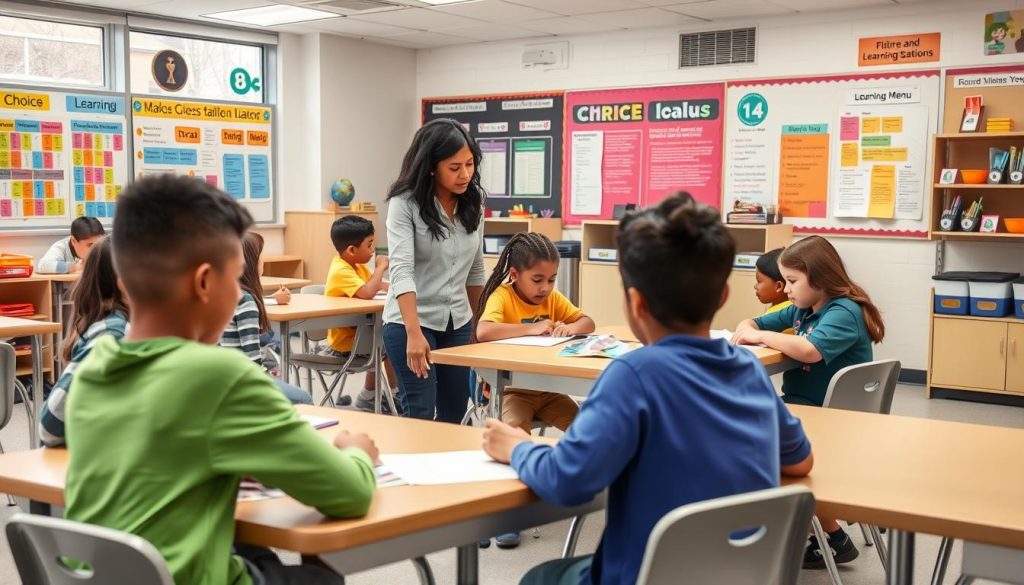Understanding Student Choice in Modern Education
Student choice represents a fundamental shift in educational philosophy—moving from teacher-centered instruction to student-centered learning. When implemented effectively, it transforms the traditional classroom dynamic by giving learners meaningful options in how they learn, demonstrate understanding, and engage with content.
Research consistently shows that providing students with appropriate choices increases motivation, engagement, and achievement. According to a study by the American Psychological Association, students who experience autonomy in their learning demonstrate greater persistence when facing challenges and develop stronger teacher skills for self-directed learning.
Effective implementation of student choice requires teachers to develop specific teacher skills that balance structure with flexibility. These include designing meaningful options, establishing clear expectations, and providing appropriate scaffolding for students who need additional support.
Ready to Transform Your Classroom?
Discover practical strategies for implementing student choice with our comprehensive guide.
Key Benefits of Student Choice Implementation
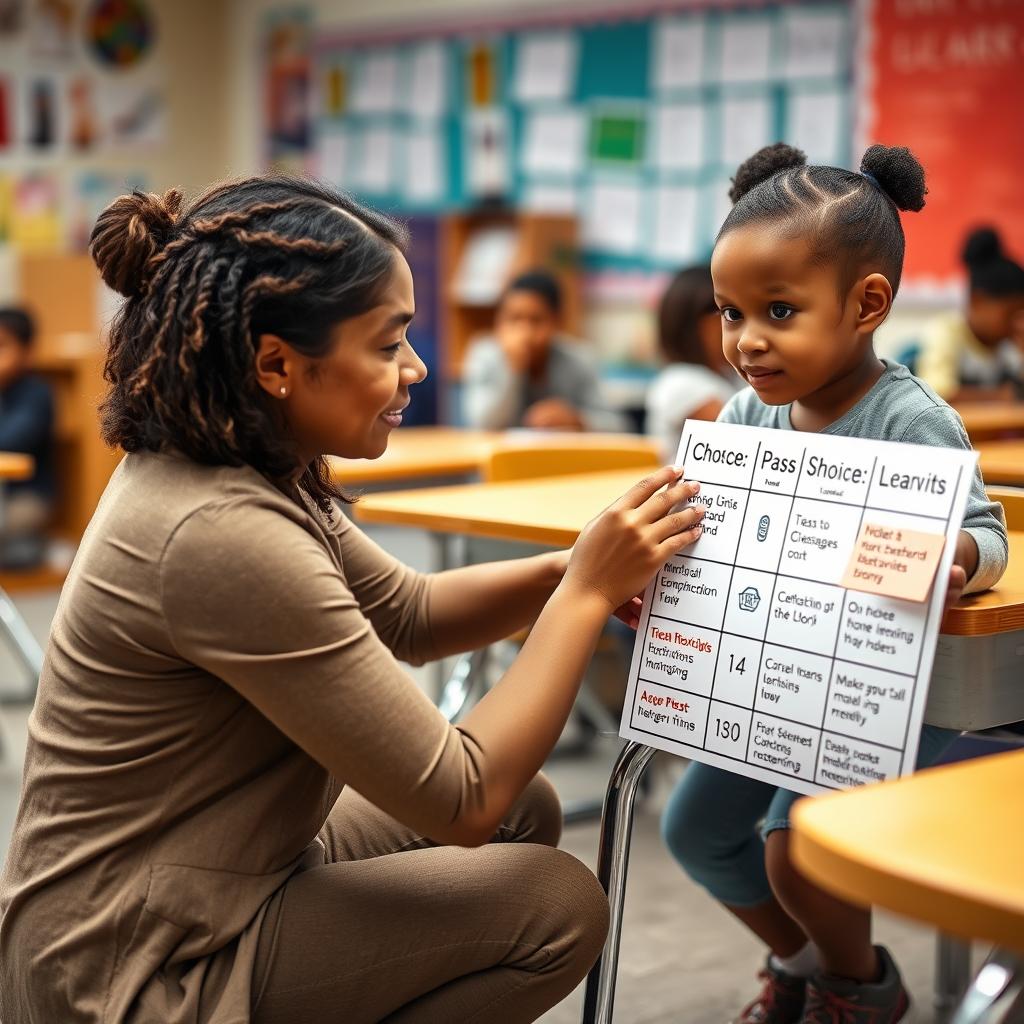 When teachers develop the teacher skills necessary to effectively implement student choice, both educators and students experience significant benefits. Understanding these advantages helps teachers prioritize choice-based strategies in their instructional planning.
When teachers develop the teacher skills necessary to effectively implement student choice, both educators and students experience significant benefits. Understanding these advantages helps teachers prioritize choice-based strategies in their instructional planning.- Increased student engagement and motivation
- Development of critical thinking and decision-making skills
- Greater student ownership of learning outcomes
- Improved classroom management through intrinsic motivation
- Enhanced differentiation to meet diverse learning needs
- Stronger student-teacher relationships built on trust
- Development of executive functioning and self-regulation
Implementing student choice doesn’t mean abandoning structure or standards. Rather, it requires teachers to develop specific teacher skills that create meaningful parameters within which students can exercise agency. This balance ensures that educational objectives are met while still honoring student autonomy.
“When students have choice, they are able to work from their strengths, pursue their interests, and develop autonomy as learners.”
— Dr. Carol Ann Tomlinson, Differentiation Expert
Practical Strategies for Implementing Student Choice
Developing the teacher skills necessary to implement student choice effectively requires intentional planning and practice. Here are practical strategies that K12 teachers can use to incorporate meaningful choice into their classrooms:
Choice Boards

Create a grid of activities that address the same learning objectives through different modalities. Students select which activities to complete based on their interests and learning preferences.
Learning Menus
Design “menus” of learning activities organized by difficulty level or learning style. Students choose activities that total a predetermined number of points.
Project Pathways
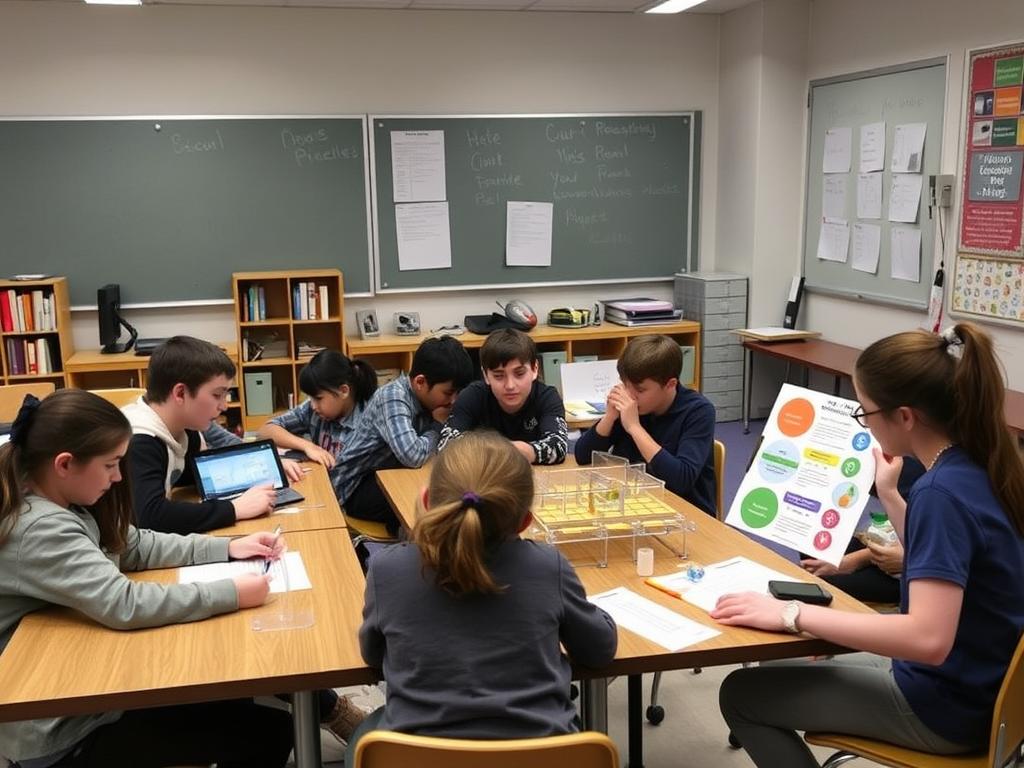
Offer multiple routes to demonstrate mastery of content. Students select from options like creating videos, writing papers, designing presentations, or building models.
Implementing these strategies requires teachers to develop specific teacher skills such as designing clear rubrics, establishing appropriate boundaries, and providing just-in-time support. The goal is to create a structured environment where choice feels manageable rather than overwhelming.
Essential Teacher Skills for Facilitating Student Choice
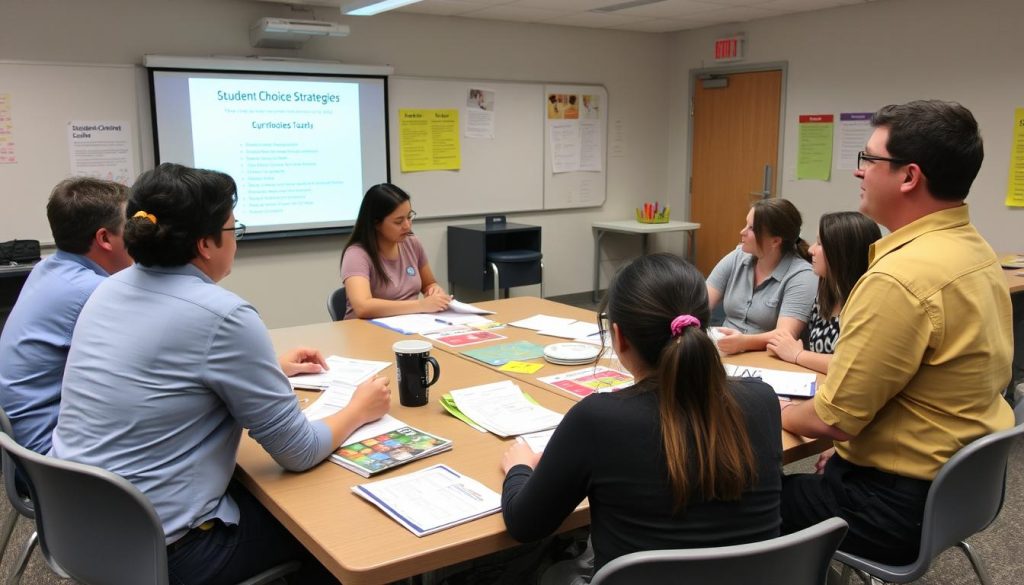
Successfully implementing student choice in the classroom requires teachers to develop and refine specific teacher skills. These skills enable educators to create the right balance between structure and autonomy, ensuring that choice leads to meaningful learning rather than confusion.
Design Skills
- Creating meaningful options that align with learning objectives
- Developing clear rubrics that work across different choice options
- Designing scaffolded choices appropriate for different ability levels
- Planning for resource management when students pursue different paths
Facilitation Skills
- Guiding student decision-making without taking over
- Providing differentiated support across various activities
- Managing the classroom when students work on different tasks
- Assessing diverse work products with consistency and fairness
Developing these teacher skills takes time and practice. Many educators find that starting small with limited choice options helps build confidence before expanding to more comprehensive student choice frameworks.
Professional Development Tip
Collaborate with colleagues to share student choice resources and strategies. This peer learning approach accelerates the development of essential teacher skills and provides valuable feedback on implementation.
Enhance Your Teacher Skills
Access professional development resources specifically designed to help K12 teachers implement student choice effectively.
Real-World Student Choice Examples Across Grade Levels
Seeing student choice in action across different grade levels can help teachers envision how to adapt these strategies for their own classrooms. The following examples demonstrate how teachers with well-developed teacher skills implement choice in age-appropriate ways:
Elementary (K-5)
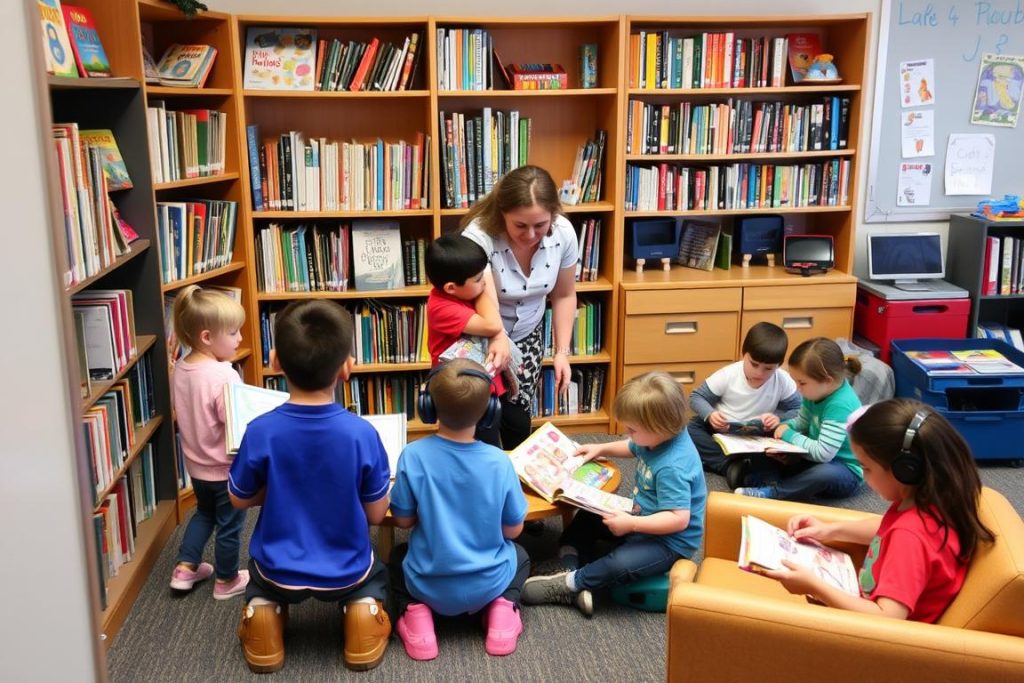
- Reading Choices: Students select books from leveled bins that match their reading abilities
- Math Centers: Students rotate through required centers but choose the order
- Show-What-You-Know: Students demonstrate understanding through drawing, writing, or verbal explanation
Middle School (6-8)
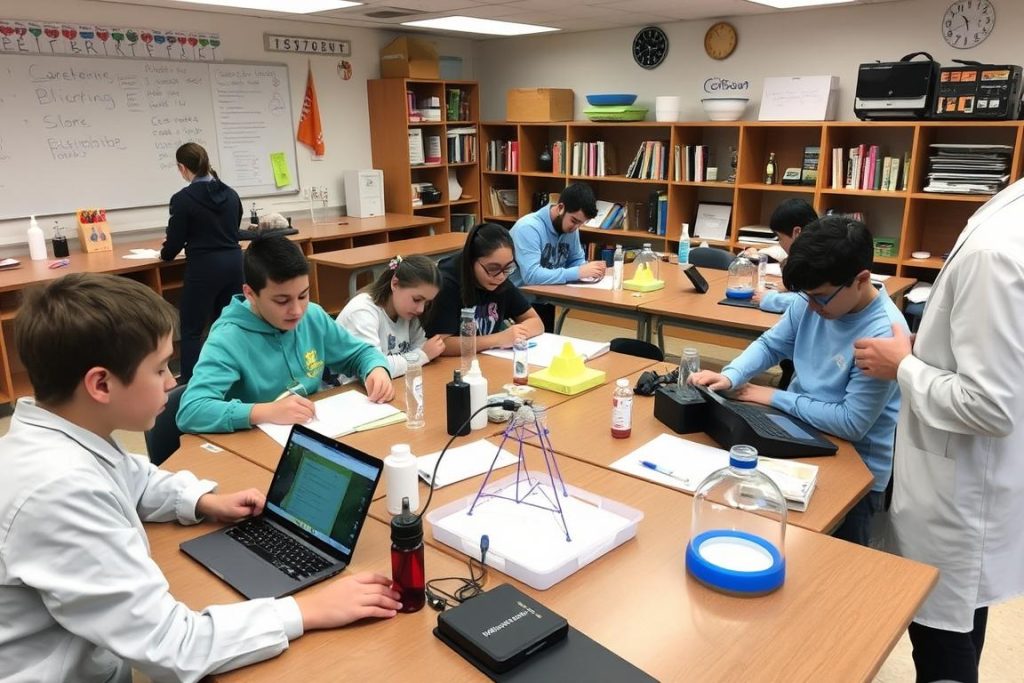
- Literature Circles: Students choose books from a curated list and select roles within discussion groups
- Science Investigations: Students design experiments to test the same concept using different materials
- History Projects: Students select historical figures to research based on provided criteria
High School (9-12)
- Essay Topics: Students select writing prompts from approved options that address key standards
- Research Pathways: Students choose research methodologies and presentation formats
- Problem-Based Learning: Students identify real-world problems to solve using course concepts
In each of these examples, teachers use their teacher skills to establish clear parameters while still providing meaningful student choice. The key is creating options that all lead to the same learning objectives while honoring different learning preferences and interests.
Overcoming Common Challenges in Student Choice Implementation

While student choice offers numerous benefits, teachers often encounter challenges when implementing this approach. Developing specific teacher skills helps educators address these obstacles effectively:
How do I manage a classroom where students are working on different activities?
Establish clear procedures for getting help, transitioning between activities, and managing materials. Use visual cues and timers to help students stay on track. Developing classroom management teacher skills specifically for choice-based environments is essential.
What if students consistently choose the easiest option?
Design choices with equivalent challenge levels but different approaches. Create rubrics that require depth of thinking regardless of the chosen format. Coach students on selecting options that stretch their abilities appropriately.
How do I ensure all choices align with required standards?
Start with the standards and work backward to design different pathways to the same learning objectives. This “backward design” approach is a critical teacher skill for effective student choice implementation.
Addressing these challenges requires ongoing refinement of teacher skills and a willingness to adjust approaches based on student responses. Many teachers find that starting with small choice opportunities helps build the necessary skills before implementing more comprehensive student choice frameworks.
Need Help Implementing Student Choice?
Access our comprehensive guide with practical solutions to common student choice implementation challenges.
Assessment Strategies for Student Choice Environments
Assessing student work in choice-based environments requires teachers to develop specific teacher skills that ensure fair and consistent evaluation across different formats. Effective assessment of student choice work products focuses on learning objectives rather than the medium of presentation.
Rubric Design
Create rubrics that evaluate the same criteria regardless of the format chosen. Focus on content mastery, critical thinking, and communication effectiveness rather than format-specific elements.
Process Documentation
Incorporate reflection components where students document their decision-making process, challenges encountered, and problem-solving strategies used throughout their work.
Peer Feedback
Teach students to provide constructive feedback on diverse work products using consistent criteria. This develops metacognitive awareness while providing valuable input.
Developing these assessment teacher skills ensures that student choice environments maintain high academic standards while honoring diverse approaches to demonstrating understanding. The goal is to create assessment systems that value both the learning process and the final product.
Embracing Student Choice: Next Steps for Educators
Implementing student choice effectively is a journey that requires ongoing development of specific teacher skills. As you begin incorporating choice into your classroom, remember that starting small and expanding gradually often leads to the most sustainable success.
The investment in developing your teacher skills for facilitating student choice pays dividends in student engagement, motivation, and achievement. When students experience meaningful agency in their learning, they develop not only academic knowledge but also the critical life skills of decision-making, self-regulation, and personal responsibility.
We encourage you to explore the resources available through Credits for Teachers to support your implementation of student choice strategies. With the right tools and support, you can transform your classroom into a dynamic environment where students thrive through meaningful choice.
Ready to Transform Your Classroom?
Take the next step in implementing effective student choice strategies with our comprehensive resources.

